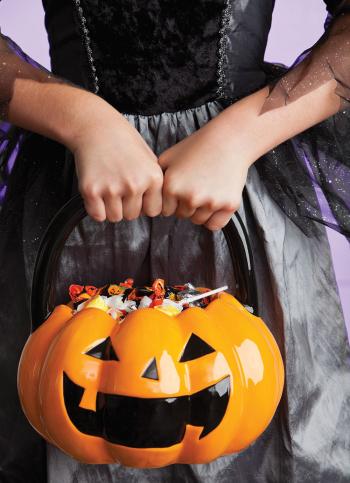
Nutritionist: A healthier Halloween is possible with planning
By BECKY B. GAUTREAUX, RD, LDN
LSU AgCenter Area Nutrition Agent
St Mary Parish
Halloween is an exciting time when children enjoy dressing in costumes and receiving candy and other treats. However, the anticipation begins weeks before Oct. 31 when Halloween treats appear on store shelves.
Avoid falling into the marketing trap of buying candy early. Purchase Halloween treats a couple of days before the big night to control the temptation to treat the kids before trick-or-treating even starts.
Bags full of candy can tempt children to overindulge in goodies. When they fill up on candy and other junk foods, kids are less likely to eat at mealtime and may end up with a stomach ailment.
When Halloween arrives, parents can help their children manage the urge to snack on sweets by serving a healthy meal before going out. Limit trick-or-treaters to a few homes of family and close friends. A smaller treat bag holds less candy and will appear full more quickly; tricking kids into thinking they have lots of treats.
Children should wait until they return home before eating their treats. This will give parents an opportunity to inspect candy to ensure it is safe to eat. It also helps adults manage how much little ones eat.
Allow kids to enjoy their goodies in limited amounts. Children should be taught that occasional sweets can fit into a healthy eating plan. Indulging in a few pieces of candy on Halloween night is all part of the fun. After that, limit them to eating one or two pieces of candy a day as part a snack with low fat milk or as dessert after dinner.
Have your child actively participate in dividing up their candy and making little treat bags they can enjoy, one each day. This activity helps teach portion control.
Store the candy in a cabinet or other out-of-sight place that only parents can reach. Because of high sugar content, candy usually has a long shelf life. It can be enjoyed weeks later instead of consuming it all within a few days. Help your child see the benefit of making Halloween treats last longer.
When trick-or-treaters ring your doorbell, offer them treats that promote better health. All food treats should be packaged by the manufacturer.
Snacks that are a better choice include dried fruit, raisins, pretzels, trail mix, animal crackers, 100 percent juice boxes, cheese crackers, cereal bars, graham crackers, pudding cups, applesauce, 100-calorie snack packs, and mini microwave popcorn bags. Consider inexpensive non-food items like pencils, erasers, stickers, temporary tattoos, bubbles, bookmarks, small balls, disk flyers, jump ropes or sidewalk chalk.
We can all take a part in minimizing childhood obesity one step at a time.
EDITOR’S NOTE: Becky Gautreaux is available at the St. Mary Parish LSU AgCenter office, 500 Main Street, Room 314, Franklin. She can be reached at 337 -28-4100 ext. 300 or via email at bgautreaux@agcenter.lsu.edu. The article is adapted from Northeast Region nutrition agents.
- Log in to post comments
